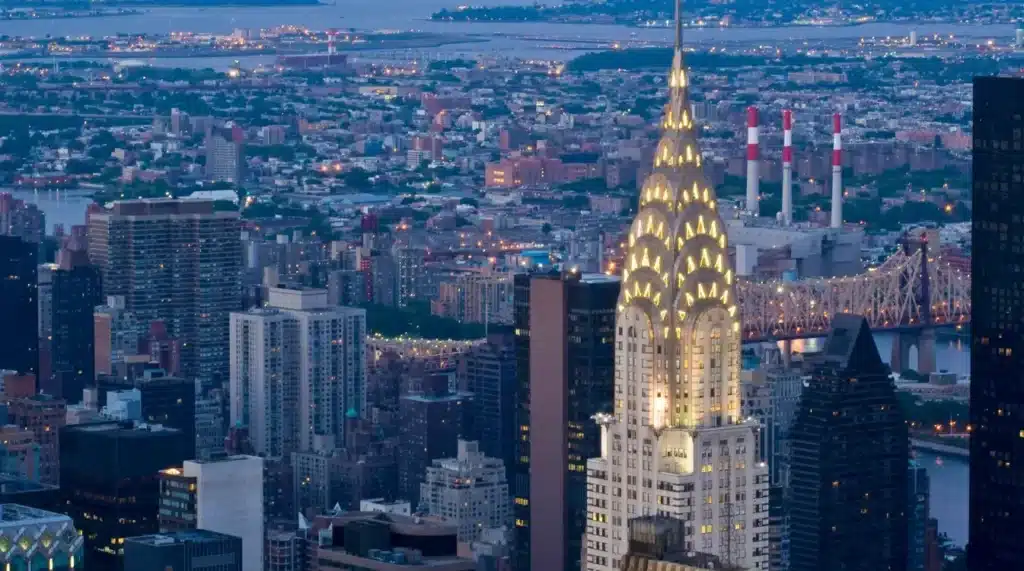The Chrysler Building, an emblem of Art Deco architecture nestled in Midtown East, NY, stands as a testament to the creative ambition of the 1920s. Designed by architect William Van Alen, this structure is renowned not only for its distinctive terraced crown but also for its pioneering use of Enduro KA-2 stainless steel, enhancing its sleek, vertical emphasis. The building’s exterior, characterized by ornamental eagles and radiant sunburst motifs, invites a closer examination of its artistic intricacies. Furthermore, the luxurious interior, featuring Red Moroccan marble and elaborate decorative elements, echoes the opulence of its era. However, to fully appreciate its historical and cultural significance, one must consider the broader narrative of its construction and enduring legacy, a discussion that remains profoundly relevant today.
Architectural Highlights and Design
Standing as a testament to the innovation of its era, the Chrysler Building embodies the essence of Art Deco architecture with its distinctive ornamental elements and advanced structural techniques. Its gleaming terraced crown, adorned with eagles reminiscent of hood ornaments, and the radiant sunburst patterns contribute not only to its striking silhouette but also manifest the era’s fascination with machine-age streamlining.
The use of Enduro KA-2 stainless steel for the cladding highlights its verticality and futuristic appeal, reflecting the skyscraper’s ambition and the technological optimism of the 1920s. Inside, the lobby is a lavish display of Art Deco motifs, featuring Red Moroccan marble walls, onyx, amber, and chrome decorations, creating a space that welcomes individuals into a bygone era of splendor and innovation.
Historical Significance and Impact
The Chrysler Building in Midtown East, NY, completed in 1930, not only epitomizes the zenith of Art Deco design but also marks a significant development in the cultural and architectural narrative of New York City.
As a towering emblem of innovation and ambition, its construction during the economic boom of the Roaring Twenties symbolizes a period of profound transformation and optimism.
The building’s distinctive ornamentation and elegant form have not only influenced subsequent architectural endeavors but also solidified its status as a cultural landmark.
Its historical impact extends beyond aesthetics, encapsulating the aspirations of an era increasingly defined by skyscrapers that shaped the modern metropolis, thereby fostering a sense of belonging among those who partake in its shared heritage.
Read more:
Grand Central Terminal: The Beating Heart of Midtown East, NY

